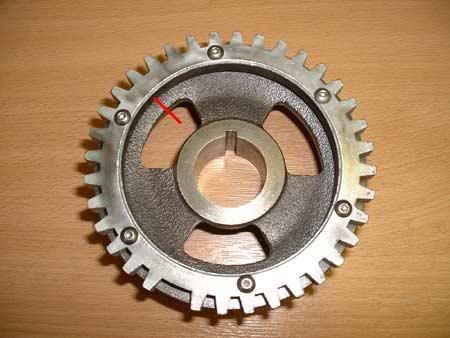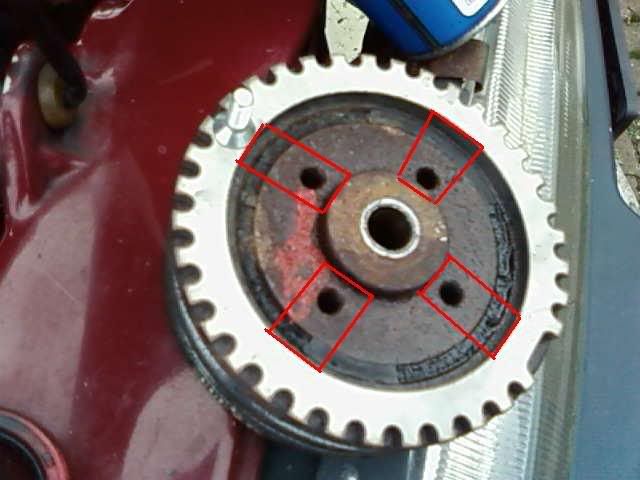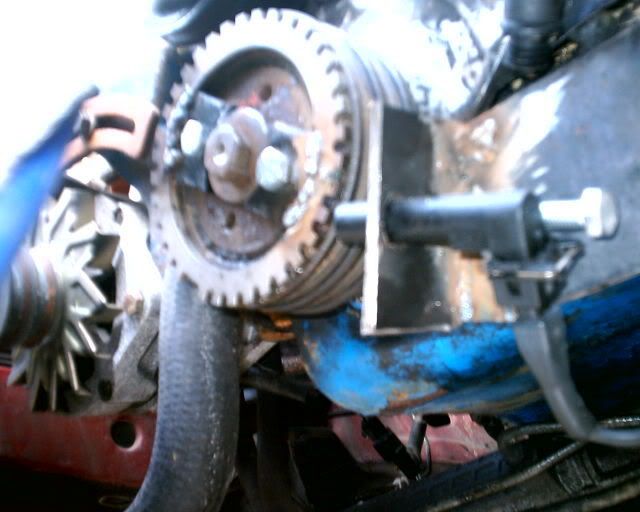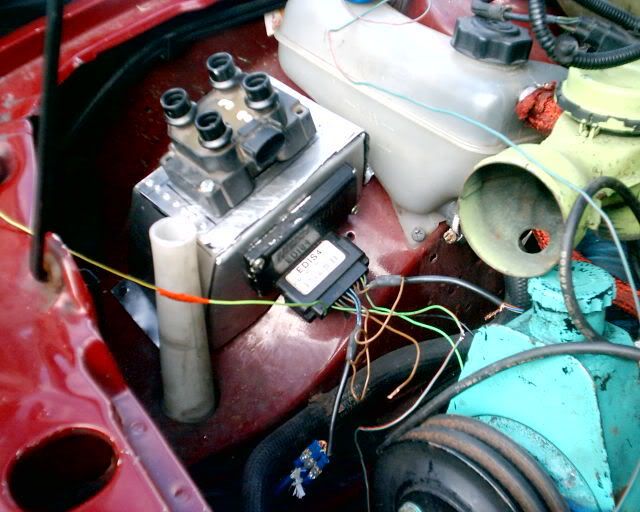I managed to get the crank pulley off with a battle,using a 2 legged puller,I think I'll buy a 3 legged one for next time.
Anyway,as I have done a PAS conversion on mine,I have a twin groove on the pulley,so it is different to what you may have seen. I just want to clarify,via the following picture,that I have this correct. So it should be 90 degrees BTDC? And should the tooth be central to the TDC timing mark? What happens if it will be slightly off?

I'm just comparing to this chap here http://www.ford-capri.fsnet.co.uk/white ... gajolt.htm
I'm guessing the TDC mark is around here,marked red,I count 11 teeth

for comparison

As you can see in the centre of the pulley,there are four threaded holes,conveniently. The threaded holes don't appear to be metric,I've tried an M6 bolt,too small,and an M8 is too big. It seems it would be a good idea to use these to bolt down the trigger wheel. But I would need to weld on brackets to the trigger wheel like this

As you can see there is a socket screw upside down,this is an M6. If I was to make holes through the trigger wheel and pulley,does the head look too big?



